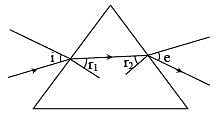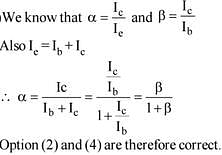JEE Main 2016 April 3 Paper & Solutions - JEE MCQ
30 Questions MCQ Test - JEE Main 2016 April 3 Paper & Solutions
A student measures the time period of 100 oscillations of a simple pendulum four times. The data set is 90 s, 91 s, 95 s and 92 s. If the minimum division in the measuring clock is 1 s, then the reported mean time should be :
A particle of mass m is moving along the side of a square of side ‘a’, with a uniform speed v in the x-y plane as shown in the figure :
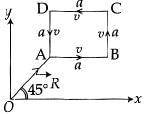
Which of the following statements is false for the angular momentum L about the origin?

Which of the following statements is false for the angular momentum L about the origin?
| 1 Crore+ students have signed up on EduRev. Have you? Download the App |
A point particle of mass m, moves along the uniformly rough track PQR as shown in the figure. The coefficient of friction, between the particle and the rough track equals m. The particle is released, from rest, from the point P and it comes to rest at a point R. The energies, lost by the ball, over the parts, PQ and QR, of the track, are equal to each other, and no energy is lost when particle changes direction from PQ to QR.
The values of the coefficient of friction m and the distance x (= QR), are, respectively close to :
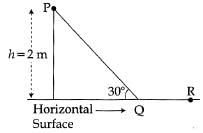
The values of the coefficient of friction m and the distance x (= QR), are, respectively close to :

A person trying to lose weight by burning fat lifts a mass of 10 kg upto a height of 1 m 1000 times. Assume that the potential energy lost each time he lowers the mass is dissipated. How much fat will he use up considering the work done only when the weight is lifted up? Fat supplies 3.8 x 107 J of energy per kg which is converted to mechanical energy with a 20% efficiency rate. Take g = 9.8 ms-2 :
A roller is made by joining together two cones at their vertices O. It is kept on two rails AB and CD which are placed asymmetrically (see figure), with its axis perpendicular to CD and its centre O at the centre of line joining AB and CD (see figure). It is given a light push so that it starts rolling with its centre O moving parallel to CD in the direction shown. As it moves, the roller will tend to:
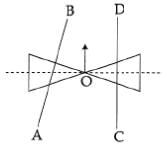
A satellite is revolving in a circular orbit at a height ‘h’ from the earth’s surface (radius of earth R; h <<R). The minimum increase in its orbital velocity required, so that the satellite could escape from the earth’s gravitational field, is close to : (Neglect the effect of atmosphere).
A pendulum clock loses 12 s a day if the temperature is 40°C and gains 4s a day if the temperature is 20°C. The temperature at which the clock will show correct time, and the co-efficient of linear expansion (α) of the metal of the pendulum shaft are respectively:
An ideal gas undergoes a quasi static, reversible process in which its molar heat capacity Cremains constant. If during this process the relation of pressure P and volume V is given by PVn = constant, then n is given by (Here CP and CV are molar specific heat at constant pressure and constant volume, respectively) :
‘n’ moles of an ideal gas undergoes a process A → B as shown in the figure. The maximum temperature of the gas during the process will be :

A particle performs simple harmonic motion with amplitude A. Its speed is trebled at the instant that it is at a distance 2A/3 from equilibrium position. The new amplitude of the motion is :
A uniform string of length 20 m is suspended from a rigid support. A short wave pulse in introduced at its lowest end. It starts moving up the string. The time taken to reach the support is:
(take g = 10 ms-2)
The region between two concentric spheres of radii ‘a’ and ‘b’, respectively (see figure), has volume charge density ρ = A/r, where A is a constant and r is the distance from the centre. At the centre of the spheres is a point charge Q. The value of A such that the electric field in the region between the spheres will be constant, is :
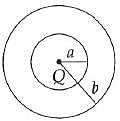
A combination of capacitors is set up as shown in the figure. The magnitude of the electric field due to a point charge Q (having a charge equal to the sum of the charges on the 4 μF and 9 μF capacitors), at a point distant 30 m from it, would equal:
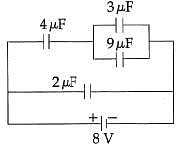
The temperature dependence of resistances of Cu and undoped Si in the temperature range 300-400 K, is best described by :
Two identical wires A and B, each of length  ‘’, carry the same current I. Wire A is bent into a circle of radius R and wire B is bent to form a square of side ‘a’. If BA and BB are the values of magnetic field at the centres of the circle and square respectively, then the ratio BA / BB is:
‘’, carry the same current I. Wire A is bent into a circle of radius R and wire B is bent to form a square of side ‘a’. If BA and BB are the values of magnetic field at the centres of the circle and square respectively, then the ratio BA / BB is:
Hysteresis loops for two magnetic materials A and B are given below :
These materials are used to make magnets for electric generators, transformer core and electromagnet core.
Then it is proper to use :
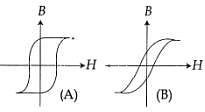
An arc lamp requires a direct current of 10 A at 80 V to function. It is connected to a 220 V (rms), 50 Hz AC supply, the series inductor needed for it to work is close to:
Arrange the following electromagnetic radiations per quantum in the order of increasing energy :
A : Blue light
B : Yellow light
C : X-ray
D : Radiowave
An observer looks at a distant tree of height 10 m with a telescope of magnifying power of 20. To the observer the tree appears :
The box of a pin hole camera, of length L, has a hole of radius a. It is assumed that when the hole is illuminated by a parallel beam of light of wavelength λ the spread of the spot (obtained on the opposite wall of the camera) is the sum of its geometrical spread and the spread due to diffraction. The spot would then have its minimum size (say bmin) when :
Radiation of wavelength λ, is incident on a photocell. The fastest emitted electron has speed v. If the wavelength is changed to 3λ/4, the speed of the fastest emitted electron will be:
Half-lives of two radioactive elements A and B are 20 minutes and 40 minutes, respectively. Initially, the samples have equal number of nuclei. After 80 minutes, the ratio of decayed numbers of A and B nuclei will be :
If a, b, c, d are inputs to a gate and x is its output, then, as per the following time graph, the gate is :
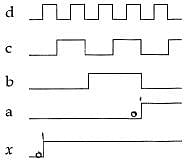
A screw gauge with a pitch of 0.5 mm and a circular scale with 50 divisions is used to measure the thickness of a thin sheet of Aluminium. Before starting the measurement, it is found that when the two jaws of the screw gauge and brought in contact, the 45th division coincides with the main scale line and that the zero of the main scale is barely visible. What is the thickness of the sheet if the main scale reading is 0.5 mm and the 25th division coincides with the main scale line?
A pipe open at both ends has a fundamental frequency f in air. The pipe is dipped vertically in water so that half of it is in water. The fundamental frequency of the air column is now :
A galvanometer having a coil resistance of 100 Ω gives a full scale deflection, when a current of 1 mA is passed through it. The value of the resistance, which can convert this galvanometer into ammeter giving a full scale deflection for a current of 10 A is :
In an experiment for determination of refractive index of glass of a prism by i - δ, plot, it was found that a ray incident at angle 35°, suffers a deviation of 40° and that it emerges at angle 79°. In that case which of the following is closest to the maximum possible value of the refractive index?
Identify the semiconductor devices whose characteristics are given below, in the order (a), (b), (c), (d):
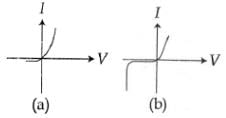
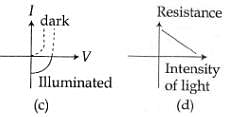
For a common emitter configuration, if a and b have their usual meanings, the incorrect relationship between a and b is:






 is incorrect.
is incorrect. 



 = 1.289 x 10-2 Kg
= 1.289 x 10-2 Kg



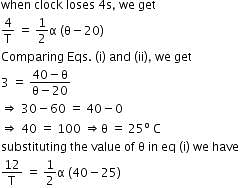



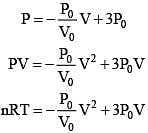

 (For maximum temperature)
(For maximum temperature) 
 (Condition for maximum temperature)
(Condition for maximum temperature)







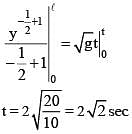


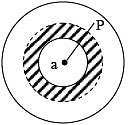


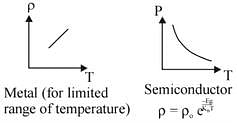
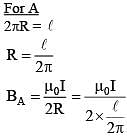


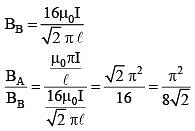

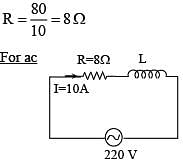
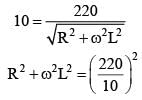





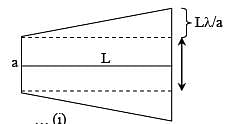


 [By substituting for a from (ii) in (i)]
[By substituting for a from (ii) in (i)] 
 .... (i)
.... (i) ...... (ii)
...... (ii)

 .... (iv)
.... (iv)





